Does your garden, backyard, balcony, or rooftop receive plenty of sunlight, and you want practical plants? This post is for you! I’ve selected 10 easy-to-care-for plants that thrive in full sun. Choose your favorites, see which ones best suit your space, and follow the care tips!
What is a Full-Sun Plant?
Full-sun plants need about six hours of direct sunlight daily, both in winter and summer. Without enough sun, they may struggle and even die. Some can tolerate less intense sunlight and thrive in partial shade.
Place your plant in the sun and observe the leaves. If they burn or wilt, move them to a spot with less exposure. Keep an eye on them!
10 Easy-to-Care-for Plants That Love the Sun
Asparagus Fern
The Asparagus Fern is so easy to care for that you might even forget about it! It requires little sun or partial shade and prefers sandy soil. Mix equal parts of sand, humus, and seedling substrate. It can grow up to 80 cm (31 inches) and is drought-resistant since its roots store water. Water only when the soil is dry, avoiding excess moisture.
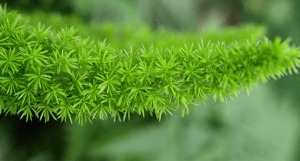
It grows easily and can be planted in pots or garden beds. However, be careful—it spreads quickly! Don’t worry about the climate; it adapts well throughout Brazil, even in colder regions.
Its tiny flowers attract birds and butterflies, but beware: the small red fruits that appear in summer are toxic.
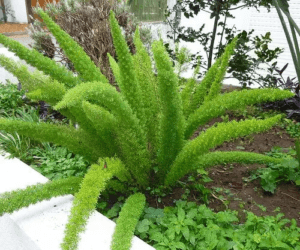
Croton
The vibrant foliage of the Croton is a spectacular sight! It is one of the best easy-to-care-for plants that love full sun. The more sun it gets, the more colorful its leaves become. It thrives in high temperatures and humidity, so avoid exposing it to cold weather or air conditioning.

The Croton likes moist but not waterlogged soil. Water it whenever the soil begins to dry out.
For propagation, cut young branches and plant them, or use the air layering technique (rooting a branch while it’s still attached to the plant before replanting). Caution: Croton sap is toxic—wear gloves when handling to prevent skin irritation.

Snake Plant (Sansevieria)
The Snake Plant is incredibly hardy, thriving in full sun, partial shade, and even low-light conditions. Water it at least once a week, but avoid soaking the soil. It can be grown in pots or garden beds and, if happy, will quickly spread with new offshoots.

Ideal for both indoor and outdoor spaces, especially near bright windows, it pairs beautifully with cacti and succulents. Plus, it has air-purifying benefits that enhance your well-being.
For propagation, separate a leaf with a rhizome or place a leaf in water and wait for roots to form. Use a mix of one-third sifted sand, organic compost, worm humus, and soil. Keep it away from small children and pets, as it is toxic.

Lantana
Lantanas are simply charming and one of my personal favorites among the best full-sun plants. Their brightly colored blooms and subtle fragrance attract bees, hummingbirds, and butterflies—what’s not to love?
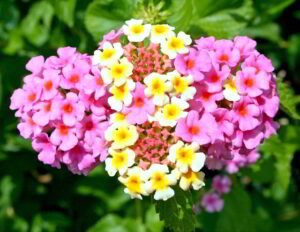
These plants are extremely resilient and require almost no maintenance. In Rio de Janeiro, they grow spontaneously in many places!
Lantanas can also thrive in bright partial shade and bloom year-round, with various multicolored varieties available. Plus, their light fragrance makes them even more delightful!
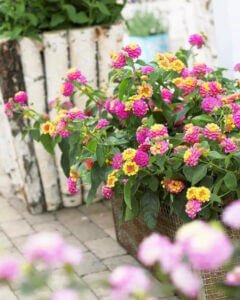
Hibiscus
Another stunning addition to this list, Hibiscus thrives in full sun and warm climates. It is low-maintenance, requiring little care in terms of soil and water, but it cannot withstand frost. Always adorned with vibrant flowers that attract hummingbirds and butterflies, it requires minimal pruning—just remove dry branches in the fall.
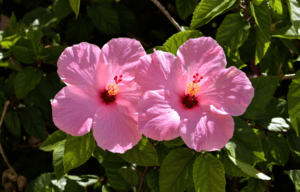
To plant, simply stick a thick branch into the soil—it will root easily. The soil should be moist but not waterlogged, and avoid using cold water for irrigation. If growing in pots, ensure good drainage. While Hibiscus can survive in partial shade, it produces fewer flowers. Be cautious: Hibiscus can be toxic to pets.
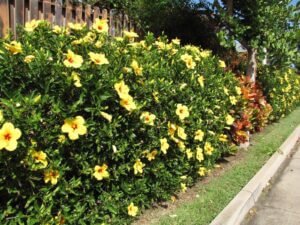
Dietes (Fortnight Lily or African Iris)
Also known as Moreia in Portuguese, Dietes is a hardy plant that looks stunning when planted in clusters. It can withstand both heat and cold, thriving in full sun or bright partial shade (though it flowers less in low light).

For best results, use a nutrient-rich soil with good drainage. Add sand if needed to prevent overwatering. Water regularly to keep it healthy.
To maintain blooming, plant new seedlings every two years. Simply divide mature clumps, ensuring each new section includes rhizomes, and space them about half a meter (1.5 feet) apart. They will quickly fill the area!
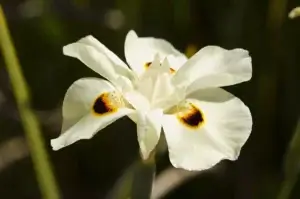
Red Hot Cat’s Tail (Acalypha hispida)
The Red Hot Cat’s Tail, or Chenille Plant, is a charming trailing plant with fuzzy red flowers resembling a cat’s tail. It looks fantastic in garden beds and hanging pots and can even cover the soil around other plants to retain moisture.
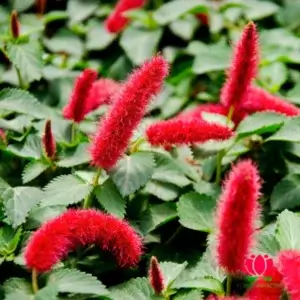
The more sun it receives, the more “tails” it produces. It is very hardy, but beware of frost. Since its roots are small, the pot doesn’t need to be too deep.
For planting, mix garden soil, sand, and animal manure in a 5:1:1 ratio for better drainage. Keep the soil moist but not soggy.
To propagate, simply break off a small stem, plant it in soil, and water daily until it takes root. When planting multiple, space them about 15 cm (6 inches) apart. Soon, they will fill the space beautifully!
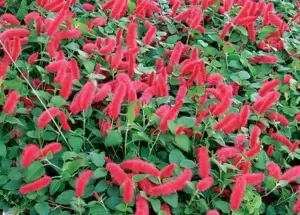
Agapanthus
Among the best sun-loving plants, Agapanthus boasts gorgeous flowers that bloom in clusters during spring and summer. They flourish in pots or garden beds, especially when pruned regularly.

They require little maintenance, making them perfect for raised flower beds or along garden walls. Ideally, grow them in nutrient-rich soil under full sun.
To propagate, divide mature clumps or plant seeds—although seedlings take two years to bloom. Keep the soil moist but not overwatered, ensuring good drainage in pots. Once mature, Agapanthus can withstand dry spells.
To keep them thriving, divide and replant them every four years.

Bird of Paradise (Strelitzia reginae)
The Bird of Paradise is a truly remarkable plant with long-lasting, unique flowers that resemble a bird in flight. Did you know it belongs to the banana family? It loves humidity (moist but well-drained soil) and requires proper aeration.

It propagates through clump division or seeds, though seeds take a long time to mature. Avoid planting in sloped areas, as it prefers level ground.
Each single clump can produce about 20 flowering stalks. When planting multiple, space them at least one meter (3 feet) apart. Mix coarse sand and organic fertilizer for healthier growth. Water regularly and remove dead stems as needed.

Alpinia (Red Ginger)
A member of the ginger family, Alpinia is another low-maintenance sun-loving plant. Its lush leaves and bright red bracts (often mistaken for flowers) make it a popular choice for floral arrangements.

Propagation is easy—simply divide the clumps with rhizomes, plant seeds, or use rhizomes alone (avoid planting too deeply in pots).
Grow Alpinia in organic-rich soil, enriched with bone meal. Water when the soil is dry, and wait for the new leaves to emerge.

Which of These Sun-Loving Plants Will You Choose?
Find a sunny spot, pick your favorites, and start planting! 🌿☀️

